It comes as no surprise that teachers’ job descriptions have shifted the most throughout this past year of coronavirus. These professionals have faced enormous challenges in how they perform their duties and manage their jobs during this pandemic. Our classrooms, transformed from desks and work tables, to stacks of books on stools and kitchen table, with fifteen faces looking back at you in the classroom, to fifteen glowing boxes on a single computer screen. We never could have imagined we would be exchanging our workbooks and glue sticks, for conference calls with children and purchasing rolls of stamps with daily visits to the post office. What didn’t shift across these past few years? Standards. “I am exhausted every day, but our kids are excelling,” Shelly Henn, teacher and new principal for Holy Cross reiterates. Teachers were tasked with teaching every subject differently, and in many instances, to students in person and at home simultaneously, with expectations to do so effectively. “The simplest tasks become difficult over Zoom, like teaching how to hold a pencil properly,” says Kerri Ysals, Our Lady of Hope teacher. “The impacts of COVID were felt by everyone,” Holy Cross parent Geoff Henngeler explains. “Teachers were unprepared, students were unprepared, and parents were unprepared. Holy Cross went above and beyond to allocate resources to families and teachers who needed support services.” Lillian Klein, office manager for both Our Lady of Hope and Holy Cross, provides an example, “Before the pandemic, the only internet device a family had were smartphones, and only the parents had them. Those phones left the home as parents went to work. We quickly recognized the importance of getting technology to our families at home and made it a priority.” Our faculty and staff enacted a one-to-one ratio, matching each student with what they needed technologically for virtual learning. Together, we secured Chromebooks and partnered with Spectrum to ensure that everyone enrolled had essential access to the internet. Our student population was not where the problems stopped. During an Advisory Council meeting, a member recounted seeing a teacher give an online presentation with a cracked computer screen. “Our teachers needed resources just as much as our families,” stated this council member. With technology needs being graciously met, finding partners to feed our students and their families, navigating new ways to keep our student body healthy and safe, have been triumphs for both schools and our teams. In speaking with our students, they continue to be exuberant about how much they love and appreciate their teachers. It is evident and felt in each and every classroom as you poke your head in to say 'hello.' This year has been incredibly hard on so many and it's important to acknowledge, that despite each setback, bad day, or sleepless night our Bright Futures Fund teachers, faculty, staff, and teams at Holy Cross and Our Lady of Hope, along with all teachers everywhere, have gone above and beyond for our students and tomorrow's leaders. In a year, with the potential to be heavy and dark - we have continued to Shine Brightly. By Kendra O'Sullivan How you can help!
You can insure that our students continue to have access to an incredible education. Click below to see some of the incredible changes that will be coming to our students and our schools through the SHINE Brightly Capital Campaign.
17 Comments
How We Supported our Students During the Pandemic - What did the 2020-2021 school year look like?8/19/2021
Looking around our classrooms at Holy Cross and Our Lady of Hope, you can see the determination on the faces of our students. Speaking with teacher after teacher, you are constantly informed of the motivation level of Bright Futures students. Journal articles, report findings of post quarantine, students returning to their schools, not only excited to be there, but excelling in STEM coursework. “This school year has been great! The kids are happy to be here, they are working hard, they are following the procedures, and they have a new appreciation for classroom learning. They want to be here.” - Shelley Henn, incoming principal for Holy Cross reports. Speaking with a group of second grade parents we were told that while virtual instruction was not the “optimum learning mode.” Learning their multiplication tables and overcoming these challenges with new technologies, outweighed standardized test scores or the results of one semester. Also, the parents shared how their children were more relaxed than either themselves or their guardians in welcoming the use of technology to learn. As Shelley Henn of Holy Cross reminds us “Students had to work really hard this year, it was not easy, but they did the work and they are where they need to be.” One of the biggest changes took place in choral music classes. CDC requirements did not permit in-person singing in our schools because neither Holy Cross nor Our Lady of Hope had adequate social distancing space for that type of airborne activity. An obvious question that follows is how does a choir teacher fulfill music education requirements based on new regulations? Jennifer Weiman, choir teacher at Holy Cross, informs us, “What started out as regulations determining execution, very quickly adapted to student-lead implementations.” As a direct result of no singing, Miss Weiman shifted the curriculum to focus on music theory and percussion instruments. This brought new to life our Christmas program, using bucket drums, boom-whackers, bells, egg shakers, sticks, body percussion, and scarf dancing, as a new take on a more traditional pageant, brilliantly and beautifully executed by our Bright Futures students. “Only a handful of kids actually love to sing, especially in middle school, so this change allowed more students the ability to enjoy something else and become more invested in the classroom,” Miss Weiman goes on. Teachers incorporating students learning was paramount both virtually and in classrooms settings. Kerri Ysals of Our Lady of Hope, shined brightly in working with grandparent Linda Anderson in creating the possible experience for her three students at home. They created a program named “Taylor Time,” where Taylor, a third-grader, was able to regularly practice reading out loud to her younger sibling’s preschool class virtually. During a time when community seemed to be so scarce, and students felt isolated, the creativity and determination of Miss Ysals gave her students a sense of togetherness and inspiration for them to keep learning and growing academically. By Kendra O'Sullivan How you can help!
You can insure that our students continue to have access to an incredible education. Click below to see some of the incredible changes that will be coming to our students and our schools through the SHINE Brightly Capital Campaign. Helping Support Our Families During the Pandemic - What did the 2020-2021 school year look like?8/5/2021
“The inherent difference of this year comes down to procedures, like mask-wearing and hand washing. Luckily, procedures are not new to kids; they are used to walking in lines and having assigned seating for lunch. The difference really comes down to virtual learning. That challenge becomes an extra burden for the students, families, and teachers – it’s a whole new job,” verbalized Lillian Klein, office manager of Our Lady of Hope and Holy Cross. Geoff Henggeler is a parent and serves on the advisory council for Holy Cross. He explained his responsibility to our organization is to listen, hear and see the needs of our community. “Home environments suddenly were transparent in online learning. Every Zoom exposed the needs of the students’ home as opposed to learning outside the home, where children did not have to bring their home life into the classroom like they do now,” Geoff tells us. These never-before-seen views into our student’s homes are what sparked our Bright Futures response to technology, married with the need for internet access and food support. Working alongside our partner, Spectrum, ensured connectivity for all students and their families, utilizing Care Act funds so each student had a tablet for continuing online learning. Along with the Seamless Summer (a food distribution program) and Giving the Basics initiative (an additional food distribution program) to their daily roles, went far beyond the job description of a classroom teacher or school administrator. Office manager of Holy Cross and Our Lady of Hope, Lillian Klein, took on a far more involved role this past year as well. “If I didn’t focus on the needs of these families, there really wasn’t going to be someone who would.” Her list, pages long, included bringing a parent a tank of fuel for their vehicle, working with the USPS to set up mailboxes and delivery so families could collect or drop off school materials, as well as helping with utility payments. In this hybrid year, families could also make the choice to keep students home for full-time online instruction. This option added a lot of logistics to the average daily lesson plan. Holy Cross and Our Lady of Hope teachers were able to incorporate students who were learning online to be included alongside students learning in the classroom. Kerri Ysals and Linda Anderson are shining examples of this partnership. Linda, a grandparent to Taylor, JD, and Amari, took on a full-time at-home teacher role and worked with instructor, Miss Ysals, to ensure the online learning options were still optimal for their students. The week leading up to Christmas break, Miss Ysals brought a substitute teacher into her classroom, to take her place while she made house calls, visiting her students and joining in on the classroom Zoom from the other side of the screen. “Being a part of a community, where teachers become loved ones, is why I want to stay so involved,” grandmother Linda Anderson tells us. “There isn’t a greater sense of certainty that families can have during a pandemic than knowing our school is listening and changing to the needs.” Adapting and adjusting, be it technology, education, or safety, is something we all know from these past 18 months across our Bright Futures Family, and both Our Lady of Hope and Holy Cross, have continued to Shine Brightly. By Kendra O'Sullivan How you can help!
You can insure that our students continue to have access to an incredible education. Click below to see some of the incredible changes that will be coming to our students and our schools through the SHINE Brightly Capital Campaign.
“Unlike so many public schools, we were able to continue to meet in person,” says Barbara Dean, Principal of Holy Cross School. Untold in that sentence were the countless hours spent, countless hours in preparation for what was to come; time spent outside of teaching, additional meetings, phone calls, logged into Zoom conferences, scouring the web, and speaking with mentors, advisors, and other experts on how they also plan to move forward. Principal Dean doesn't speak about the importance of our school’s educational commitment to students without mentioning the role of the school to protect and keep our students safe. Shelley Henn, teacher and incoming principal for Holy Cross, echoes that sentiment. “Safety was as much of a priority to our students and our staff as education is.” One of the most effective ways both Holy Cross and Our Lady of Hope were able to ensure student health and safety and preserve the in-person learning environment was to group students into cohorts, keeping them together as much as possible. Meals, recess time, and of course, classroom learning at both Holy Cross and Our Lady of Hope provided a safer and healthier space to diminish potential exposure and halt school-wide spread if there was a positive COVID test. If a positive test was presented these small groups could shift to online learning and quarantine for 14 days without additional disruption to the remainder of our student body. The goal all along was to have as many children in our building actively being educated in as familiar a manner as possible each day. Incoming Principal Henn of Holy Cross reflects, “I liked having students in their classrooms for meals. It was a perfect way to start the day because I knew that our kids had all eaten before jumping into learning.” Families were also given the opportunity to keep their children home full-time for online instruction, challenging teachers to fine-tune their lessons for both in-person and virtual students. For example, Kerry Ysals, pre-K teacher at Our Lady of Hope; ensured that the online instruction option was still optimal for her students, building lesson plans producing at-home packets for these children weekly. “The simplest tasks become difficult over Zoom, like teaching proper holding of a pencil,” Miss Yslals remarked. Another way we navigated the challenges of the pandemic was through our events. Choir concerts were one such example as they needed to be fully reimagined. Where music rehearsals could take place in-person during school hours with students in their smaller ensembles, concert attendance was hosted via Zoom and social media streams to adhere to health guidelines. Students worked in our classrooms to record their performances, with Jennifer Weiman, the choir teacher at Holy Cross, managed all aspects of production. Her efforts in filming, editing, and streaming created a fantastic full virtual Christmas recital of our students for their families, friends, and our community that was shared in a safe manner. This school year has included many changes and challenges, for students, families, teachers, and administrators alike. The learning environment certainly has been different for all, and we are pleased to see how open to change our students and their families continue to be. By Kendra O'Sullivan How you can help!
You can insure that our students continue to have access to an incredible education. Click below to see some of the incredible changes that will be coming to our students and our schools through the SHINE Brightly Capital Campaign. 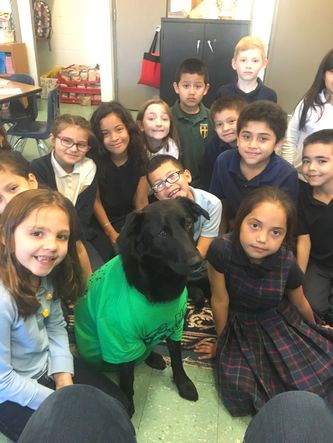 Second grade students from Holy Cross pose with Addy the lab Second grade students from Holy Cross pose with Addy the lab Typically second grade Holy Cross students show up the first day of school knowing how to read, having mastered their know-how the year before. One young boy didn’t. A reserved, quiet youngster, the little tyke, nevertheless, was the first student to reach out to the school’s new reading mentor, approaching her with a book of his choice and then sitting down to read the words out loud. The book was Clifford the Big Red Dog. The mentor was Addy, a Labrador retriever mix. Barbara Deane, principal, had been interested in the benefits of dogs to soothe anxiety while encouraging student participation for a number of years, but had never had the opportunity to have a dog on staff. Two months ago the right dog showed up with the right credentials. Shelley Henn, second grade teacher, heard about “Puppies for Parole”—a program for rescue dogs trained by prison inmates. With the responsibility of having a dog to share their limited space, the prisoners taught their four-legged cellmates to be adaptable, attentive, and—most importantly—patient. Once Shelley visited Holy Cross’ prospective pup, she know it was meant to be. Addy was bundled into her car and arrived for work in the classroom the very next day. According to Ms. Deane, “Addy is available for hugs, ball-toss games at recess, and especially reading.” The classroom includes a reading chair which Addy sits near when she's ready to work. When she needs a break, instead of heading for the teachers’ lounge, she simply lies down on the floor. When she does, the kids respect her need for rest, just as Addy respects their eagerness and enthusiasm when they sit by her side with a book—and sometimes her fur—in hand. Even reading-adverse middle school students line up to read with Addy. Though the typically self-conscious kids will do anything to keep from reading in public—a responsibility they’re occasionally asked to fulfill at Mass—they seem more open to the idea when they get a chance to practice with Addy. “Another terrific side effect of having a reading dog,” Ms. Deane chuckles, “is that we're having a lot of requests for books about dogs!” |
Archives
January 2023
Categories
All
|

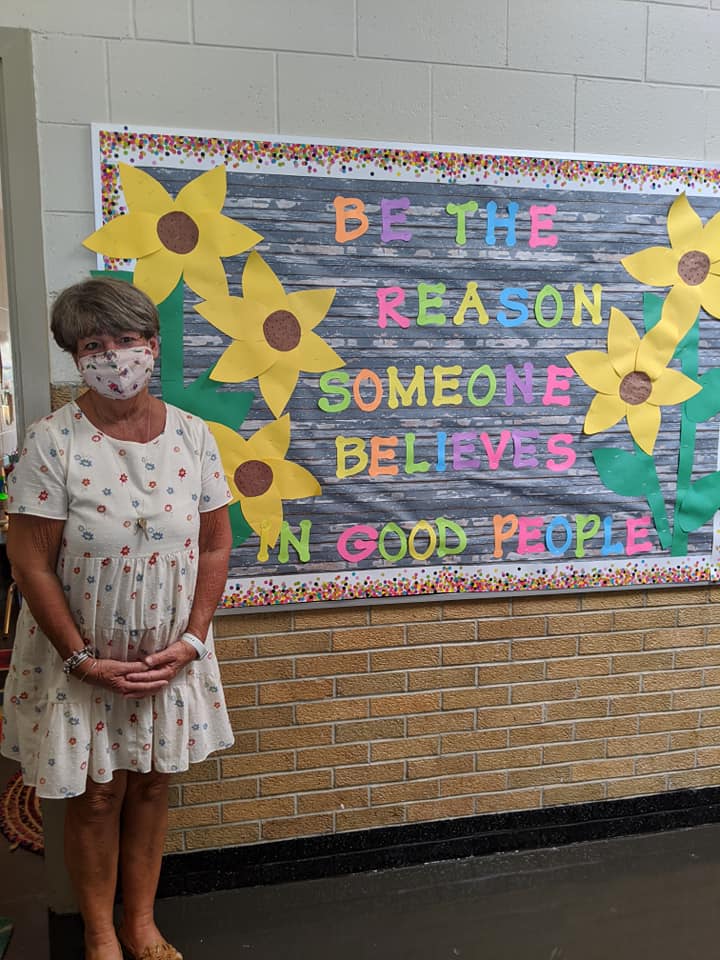
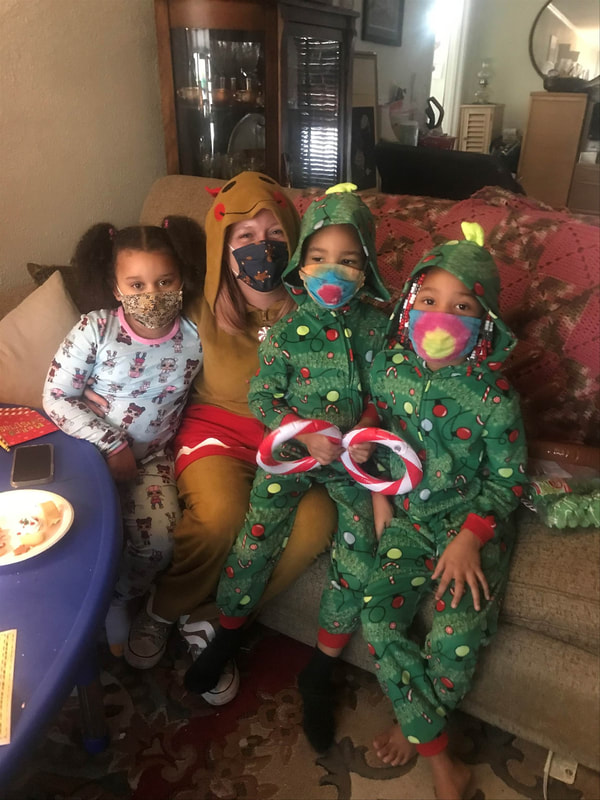
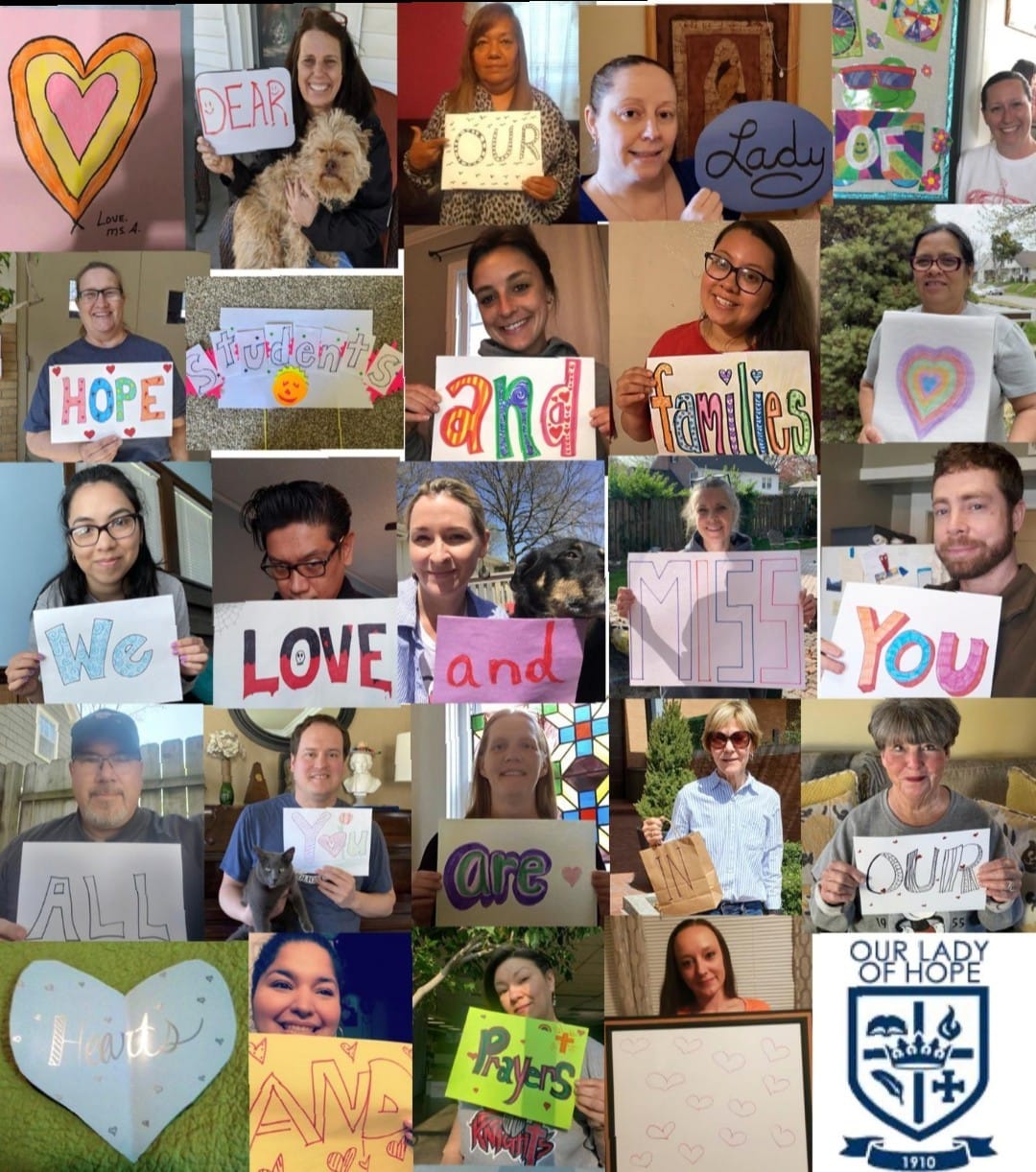
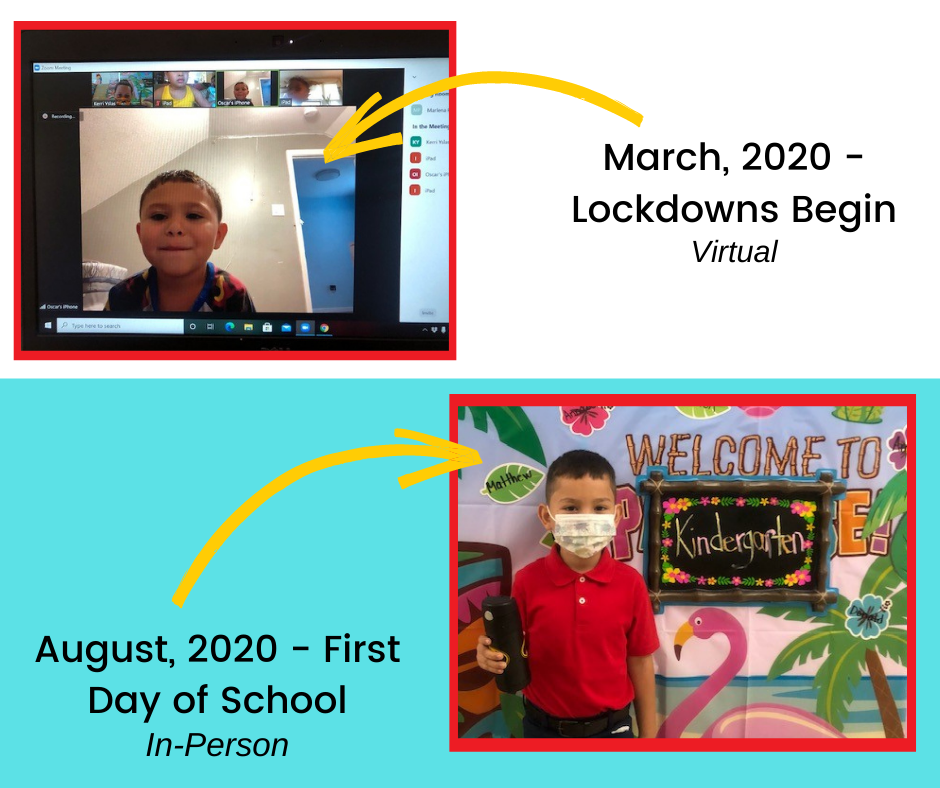
 RSS Feed
RSS Feed